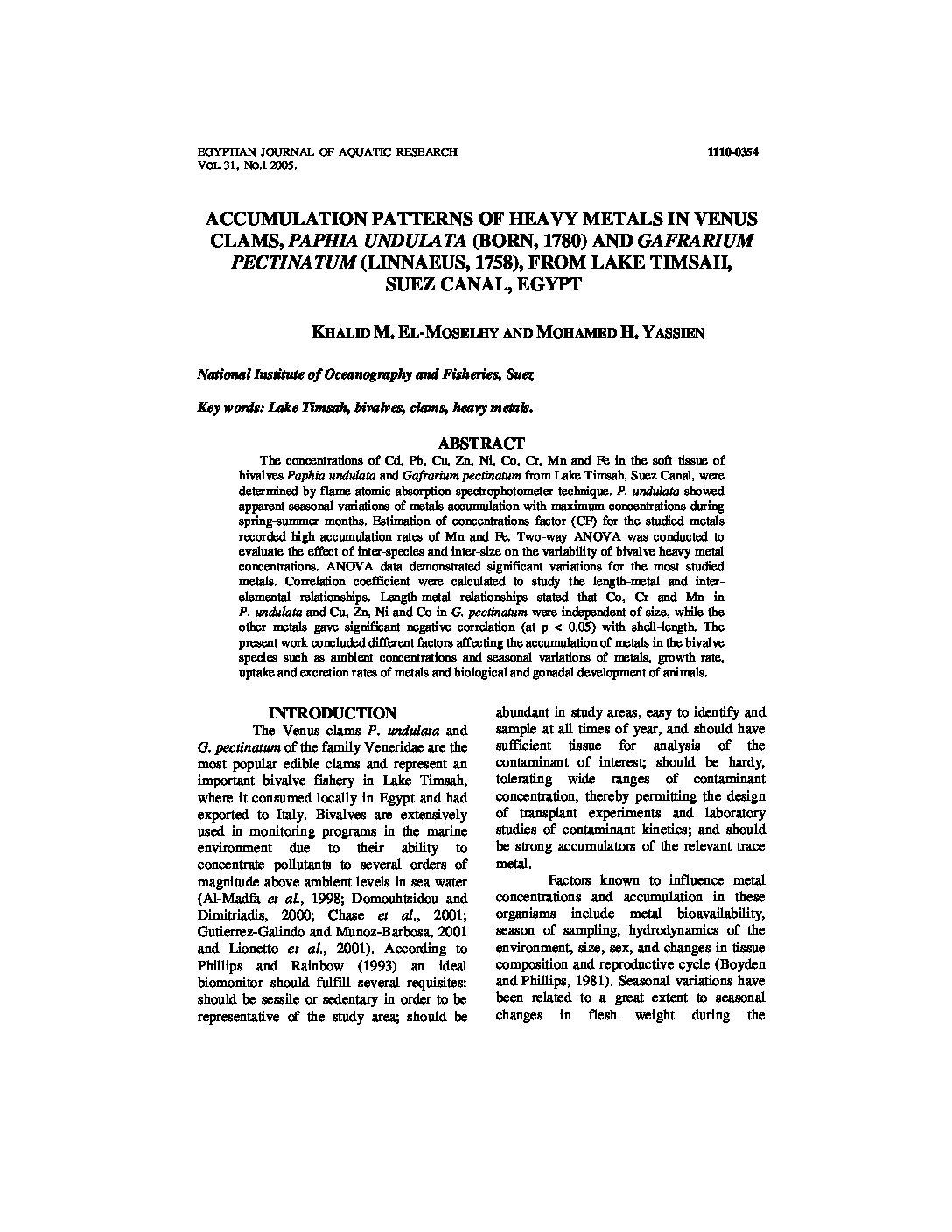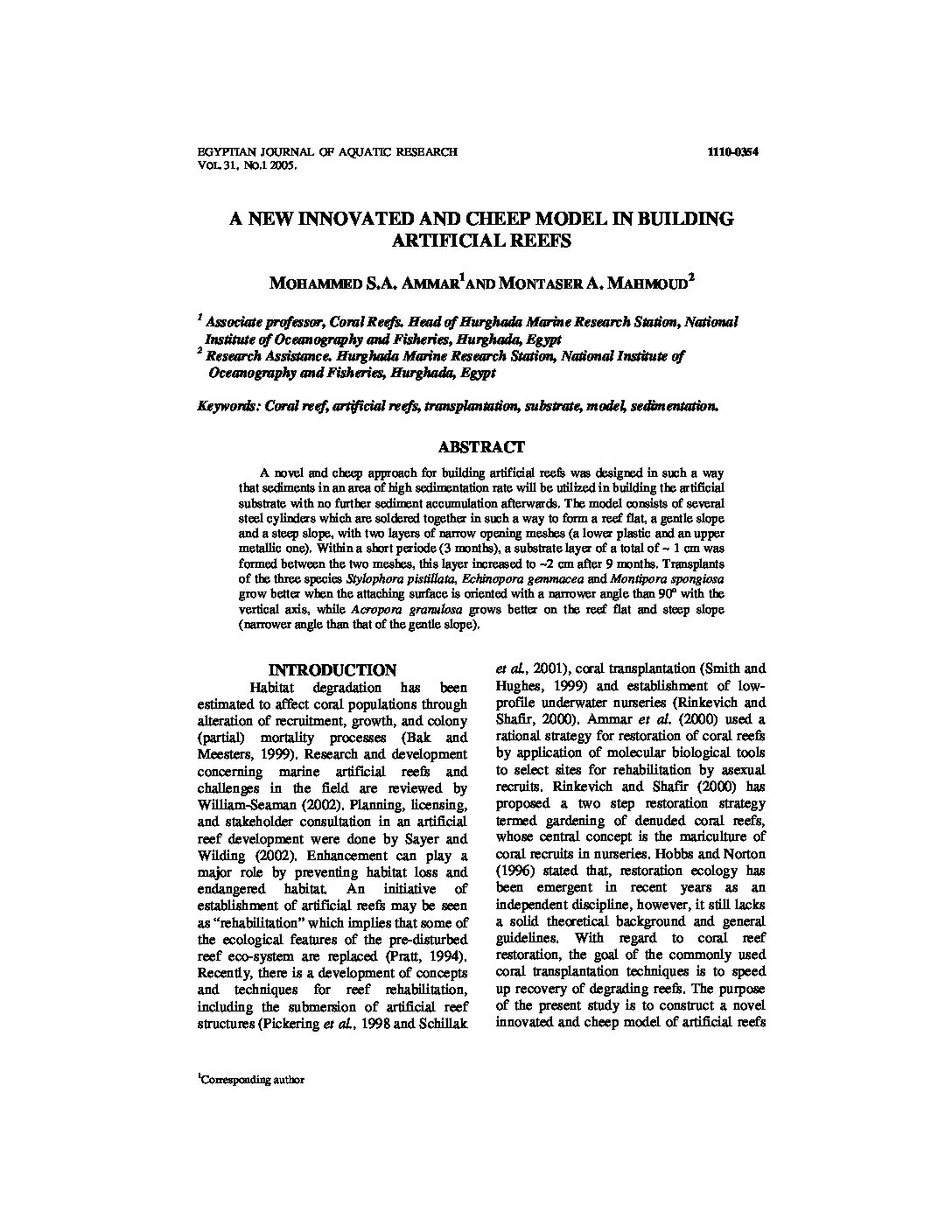Categories
vol-31ACCUMULATION PATTERNS OF HEAVY METALS IN VENUS
CLAMS, PAPHIA UNDULATA (BORN, 1780) AND GAFRARIUM
PECTINATUM (LINNAEUS, 1758), FROM LAKE TIMSAH,
SUEZ CANAL, EGYPT
KHALID M. EL-MOSELHY AND MOHAMED H. YASSIEN
National Institute of Oceanography and Fisheries, Suez
Key words: Lake Timsah, bivalves, clams, heavy metals.
ABSTRACT
The concentrations of Cd, Pb, Cu, Zn, Ni, Co, Cr, Mn and Fe in the soft tissue of
bivalves Paphia undulata and Gafrarium pectinatum from Lake Timsah, Suez Canal, were
determined by flame atomic absorption spectrophotometer technique. P. undulata showed
apparent seasonal variations of metals accumulation with maximum concentrations during
spring-summer months. Estimation of concentrations factor (CF) for the studied metals
recorded high accumulation rates of Mn and Fe. Two-way ANOVA was conducted to
evaluate the effect of inter-species and inter-size on the variability of bivalve heavy metal
concentrations. ANOVA data demonstrated significant variations for the most studied
metals. Correlation coefficient were calculated to study the length-metal and interelemental relationships. Length-metal relationships stated that Co, Cr and Mn in
P. undulata and Cu, Zn, Ni and Co in G. pectinatum were independent of size, while the
other metals gave significant negative correlation (at p < 0.05) with shell-length. The
present work concluded different factors affecting the accumulation of metals in the bivalve
species such as ambient concentrations and seasonal variations of metals, growth rate,
uptake and excretion rates of metals and biological and gonadal development of animals.







